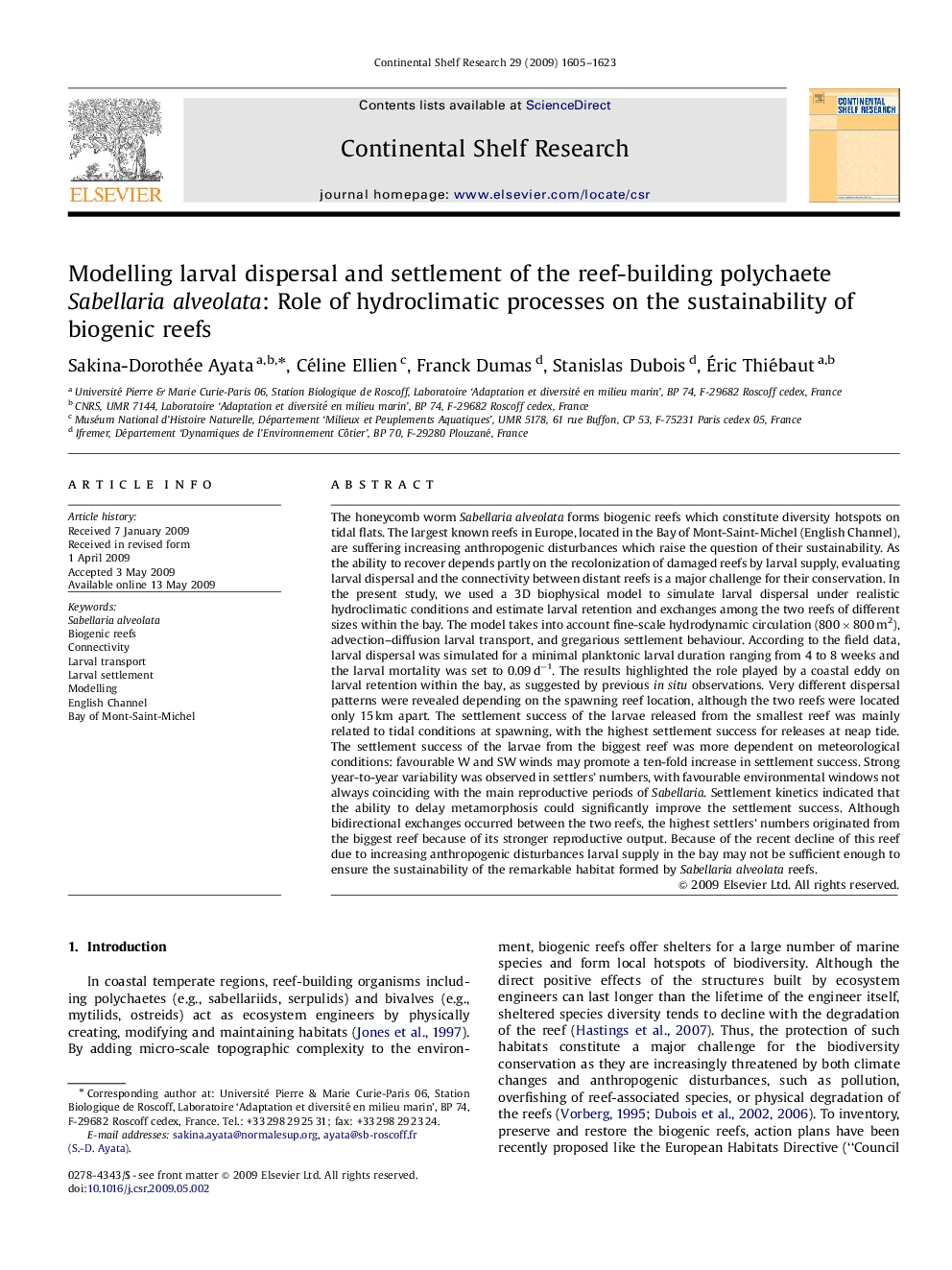| کد مقاله | کد نشریه | سال انتشار | مقاله انگلیسی | نسخه تمام متن |
|---|---|---|---|---|
| 4533469 | 1325194 | 2009 | 19 صفحه PDF | دانلود رایگان |

The honeycomb worm Sabellaria alveolata forms biogenic reefs which constitute diversity hotspots on tidal flats. The largest known reefs in Europe, located in the Bay of Mont-Saint-Michel (English Channel), are suffering increasing anthropogenic disturbances which raise the question of their sustainability. As the ability to recover depends partly on the recolonization of damaged reefs by larval supply, evaluating larval dispersal and the connectivity between distant reefs is a major challenge for their conservation. In the present study, we used a 3D biophysical model to simulate larval dispersal under realistic hydroclimatic conditions and estimate larval retention and exchanges among the two reefs of different sizes within the bay. The model takes into account fine-scale hydrodynamic circulation (800×800 m2), advection–diffusion larval transport, and gregarious settlement behaviour. According to the field data, larval dispersal was simulated for a minimal planktonic larval duration ranging from 4 to 8 weeks and the larval mortality was set to 0.09 d−1. The results highlighted the role played by a coastal eddy on larval retention within the bay, as suggested by previous in situ observations. Very different dispersal patterns were revealed depending on the spawning reef location, although the two reefs were located only 15 km apart. The settlement success of the larvae released from the smallest reef was mainly related to tidal conditions at spawning, with the highest settlement success for releases at neap tide. The settlement success of the larvae from the biggest reef was more dependent on meteorological conditions: favourable W and SW winds may promote a ten-fold increase in settlement success. Strong year-to-year variability was observed in settlers’ numbers, with favourable environmental windows not always coinciding with the main reproductive periods of Sabellaria. Settlement kinetics indicated that the ability to delay metamorphosis could significantly improve the settlement success. Although bidirectional exchanges occurred between the two reefs, the highest settlers’ numbers originated from the biggest reef because of its stronger reproductive output. Because of the recent decline of this reef due to increasing anthropogenic disturbances larval supply in the bay may not be sufficient enough to ensure the sustainability of the remarkable habitat formed by Sabellaria alveolata reefs.
Journal: Continental Shelf Research - Volume 29, Issue 13, 30 June 2009, Pages 1605–1623